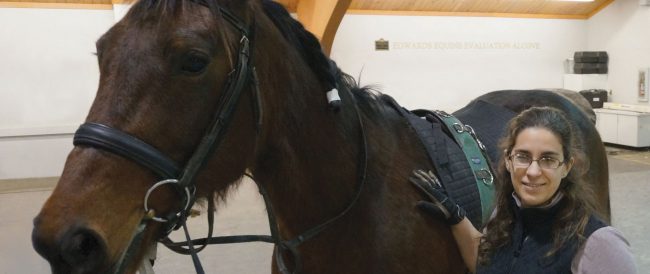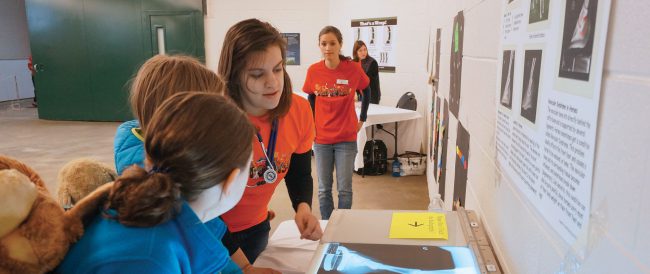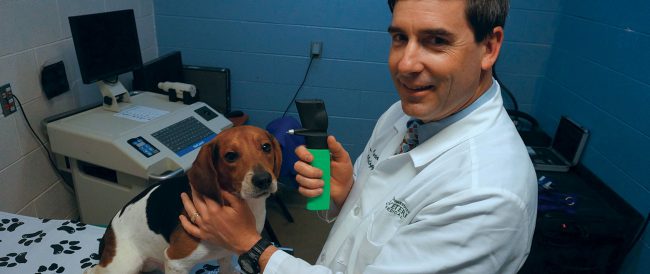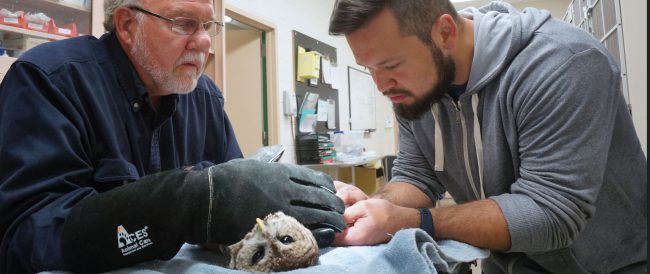 Read More
Read More
Innovation for advancement in veterinary medical education

The College is reinventing its curriculum to create a healthier environment for education and a greater opportunity for students to learn in context. The new curriculum will foster critical thinking, communication, business acumen, clinical reasoning, and problem solving skills, as well as a comprehensive background in the biomedical sciences and clinical disciplines that are the foundation of veterinary medicine.
“To remain fresh and relevant, we must reflect,” says Dr. Mike Chaddock, associate dean for Administration. “With the world we currently live in and the world our graduates will live in, we must ask ourselves how we can best meet the needs and learning styles of this new generation of veterinarians.”
Facing external challenges such as accreditation, student wellness, and the student debt crisis, the College is embarking on a curriculum redesign that presents rich opportunities to integrate the latest thought leadership and new methodologies for teaching and learning, creating a well-designed curriculum that nurtures both student education and wellbeing.
The Impact of Accreditation
The College’s last accreditation cycle was in 2012, and the last full curriculum reinvention was in 1992, with small periodic updates over the last 25 years. Now, the College is approaching a new accreditation cycle and seizing the opportunity to revitalize the curriculum.
“Curricular change and revision is something that is, and should be, happening all the time,” says Dr. Janver Krehbiel, professor emeritus, who was associate dean for Academic Programs and Student Affairs. “Generally, updates have focused on three things—what will help the students learn more efficiently and effectively, what will improve the educational process, and what needs to be done to meet the Council on Education Standards for Curriculum and Outcomes Assessment. We must work to achieve the goal of continual quality improvement, while keeping in mind the best interests of the students, faculty, and the program.”
The College’s first step was to review and understand the standards for accreditation, which have changed since the last accreditation cycle. The College is focusing on outcomes assessment, specifically on day-one, career-ready competencies.
“Working together from floor to ceiling on this as a team will empower us to reach well beyond the standards for accreditation to improve our curriculum, our students, and our College,” says Dr. Helene Pazak, director of Accreditation and Off-Campus Clinical Instruction.
Focus on Wellness
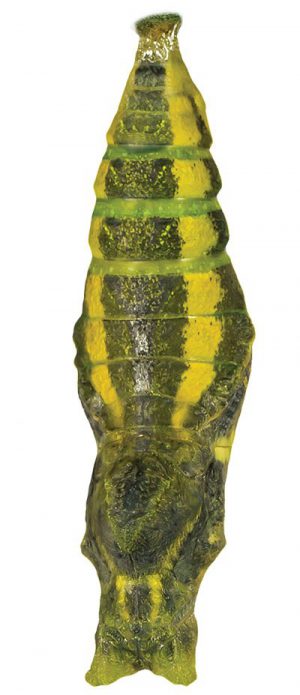
Wellness among students, faculty, and the entire College is a focal point of the new curriculum. The current structure offers limited scheduling options, which makes it difficult for students to adjust their classes without falling a year behind in the program. In contrast, the new curriculum will be competency-based and eventually will give students some flexibility in scheduling, allowing them to slow down or speed up their course progression. This gives students more choice and control, and may result in improved health and well-being. It also will allow students time to address personal, family, or health issues, which may help to relieve stress for everyone involved.
“When students face challenges external to the program, they are often reluctant to take the time to address them because they worry about taking time away from studying and other school commitments,” says Dr. Chandra Grabill, assistant dean for Student Wellness and Engagement. “Instead, they often wait until the problem becomes severe before they do something.”
The flexibility built into the new curriculum should help students deal with issues before they reach a point of crisis, while allowing faculty and staff to intervene sooner and more efficiently help students to get back on track with their studies. “I am hopeful that the new curriculum will be proactive and allow for early intervention when problems arise,” says Grabill.
The Curriculum and Debt
In veterinary medicine, the current national debt-to-income ratio stands at approximately 2:1, representing debt (usually around $130,000) at twice the starting income for new graduates. Dr. John Baker, dean for the College, is leading a national initiative with the American Veterinary Medical Association and the Association of American Veterinary Medical Colleges to tackle this issue. In spring of 2016, MSU hosted the Fix the Debt Summit, which brought together national and international veterinary leaders from academia, industry, private practice, and government.
“As a profession, we need to address student debt and advocate on a state and federal level for increased funding for higher education,” says Baker. “We also must look on an institutional level and ask what we as a College can do for our students. That’s where the Curriculum Reinvention comes in.”
Chaddock emphasizes the role of the College in confronting the debt problem. “We acknowledge first and foremost that it is a crisis,” Chaddock says. “We are facing it head on—with the curriculum reinvention to better serve our students, with increased scholarships, and with debt counseling for students so they can make better financial decisions and possibly lower the amount of debt incurred during their education.”

Shifting Industry Requires New Curricular Concept
As the lifestyle and needs of the veterinary profession evolve, the curriculum should change as well. Research shows that 60 percent of all infectious diseases are zoonotic in origin, and 75 percent of infectious diseases that emerged in the last decade arose from animals. Veterinary graduates need to be prepared to engage and participate in the One Health arena.
Until now, the College has adopted a traditional model for curriculum—more of a lock-step process through health, pathology, and clinical experience. Most students do not approach a clinical situation until their third year—a component that will change significantly under the reinvention.
“The updated curriculum will meet the changing needs of graduates, including more intensity, flexibility, and options to explore the many non-clinical careers via veterinary medicine allowing for more employment options after graduation,” says Dr. Julie Funk, associate dean for Academic Programs and Student Success.
Learning will focus on real-world application, moving away from straight lectures. The new modular curriculum plan will allow students to approach each subject in components that may include interactive electronic lessons and self-assessments, as well as clinical, hands-on learning. This is in contrast to the current model of linear, didactic knowledge acquisition followed by clinical training.
The end goal is a more integrated curriculum that blends clinical experience with science knowledge acquisition at the outset. “We are striving to prepare students who have both technical knowledge and entry-level professional competencies for their career choice within the profession,” says Funk.

Faculty-Crafted Curriculum
Of course, a shift in deliverables will require a change in delivery style. “The vision is to move from ‘sage-on-the-stage’ to ‘coach-and-mentor’ teaching models, which represents a shift in faculty roles and responsibilities,” says Funk. “There will be some adjustment at first as faculty learn to shift to adopt new models. I think that the enthusiastic faculty involvement shows the ability to, and interest in, change.”
College faculty have been very involved in the reinvention process. Specialty Working Groups were formed—each one targeted to a specific facet of the new curriculum.

“These Working Groups are key to the overarching success of our Curriculum Reinvention. Each one is a unique touchstone that we must evaluate, update, and implement,” says Funk. “This process isn’t just for our students. The new curriculum will impact the veterinary profession and impact our entire community that our profession serves—locally, nationally, and globally.”
The original three Working Groups are now five: Competencies, Economics of Higher Veterinary Education, Wellness, Educator Development, and Curriculum Models and Assessments.
“It’s a really exciting time,” says Funk. “We are well placed internally from the standpoints of initiative, ability, and resources to reinvent how we provide veterinary medical education to the benefit of our University, our society, Michigan, and the world.”
Ultimately, the College is using Curriculum Reinvention to answer two key questions: what and how students will learn, and how the College can best facilitate this.
“As we answer these questions,” says Funk, “our students, our faculty, and our community will advance together.”





